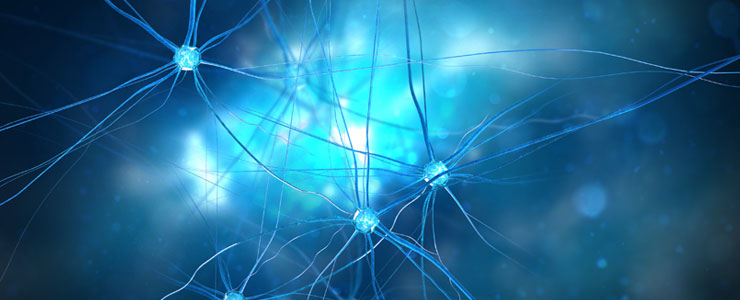Projects 研究プロジェクト
Projects
人工脳組織を用いた脳機能解明 Understanding human brain through constructing organoid circuit tissues
構成メンバー
People
- 研究リーダー Project Leader
-
東京大学 生産技術研究所 Institute of Industrial Science, The University of Tokyo
- 研究担当者 Researcher
-
-
 池上 康寛 特任研究員 Yasuhiro Ikegami Project Researcher
池上 康寛 特任研究員 Yasuhiro Ikegami Project Researcher -
 周 小余 アンジェラ 特任研究員 Chow Siu Yu Project Researcher
周 小余 アンジェラ 特任研究員 Chow Siu Yu Project Researcher
-
Events
Events
- 第34回研究セミナー「人工脳組織を用いた疾患モデル研究の現状」 The 34th Research Seminar: Current Researches on Disease Models Using Artificial Brain Tissue
- 第6回 Beyond AI 研究推進機構サイエンスカフェ 動画を公開 The 6th Institute for AI and Beyond Science Café Video is now available
- 第1回研究セミナー「人工脳組織を用いた脳機能解明」 1st Research Seminar: Understanding brain mechanisms through making model circuits from stem cells.
News
News
ビデオ
Movie
課題
Challenges
人工知能と脳機能の解明 Elucidation of Artificial Intelligence and Brain Functions


人工知能研究と脳科学は切っても切り離せない関係にあるといえます。現在、自動運転や新薬開発などさまざまな領域で応用されているディープラーニング(深層学習)も、人間の脳の働きをコンピューター上で模倣したニューラルネットワークという技術を基盤としていることはよく知られています。人間の脳の仕組みを模したニューラルネットワークを深層化したディープラーニングは、音声・画像・自然言語を対象とする諸問題に対し、他の機械学習の手法を凌駕する高い性能を示しました。ここ10年間、機械学習の応用分野はディープラーニングの登場によって飛躍的に広がり、今では私たちの生活の中でもAIの恩恵を享受できる様になったのです。
しかし、ニューラルネットワークは私たち人間の脳の活動のごく一部、脳神経と神経細胞の信号処理の仕組みを模倣したものにすぎず、実際の脳の機序ははるかに複雑です。未だ、コンピューターは知性をはじめとした人間の脳が持つ高度な機能を再現するには至っていません。AIの能力を飛躍的に向上させるための新たな手法、さらには、コンピューターに人間のような知性を獲得させるための方法について、今、改めて脳科学と人工知能の融合研究に注目が集まっています。人間の脳の仕組みの解明は、人工知能研究の次のブレイクスルーとなる進化の鍵として期待されているのです。
Artificial intelligence research and brain science are inseparable. Deep learning, which is currently applied in diverse areas such as autonomous driving and new drug development, is also widely known to be based on a technology called neural networks that mimic the functions of the human brain on computers. Through a mimicking approach, the deep learning neural network demonstrates high performance exceeding other machine learning methods for various problems related to speech, images, and natural language. Over the last decade, the areas of application of machine learning have expanded dramatically with the emergence of deep learning, allowing us to enjoy the benefits of artificial intelligence (AI) in our daily lives.
However, the neural networks make up only a small portion of our brain’s activities, mimicking the mechanism of signal processing of cranial nerves and nerve cells. The actual mechanism of the brain is much more complicated. Computers have yet to be able to reproduce the sophisticated functions of the human brain such as intelligence. Studies on combining brain science and AI are once again gaining spotlight in the areas of novel methods for dramatically improving AI performance and methods for computers to acquire human-like intelligence. Unraveling the mechanism of the human brain is thus expected to hold the key to evolution and the next breakthrough in AI research.
研究の内容
Details of Project
人工脳組織の機能化 Functionalization of Artificial Brain Tissues
「体の外で脳を真似た神経回路を作れたら、脳のように高度な機能を持つのでしょうか?」
この問いに答えることができれば、脳が機能するために必要な要素や条件を理解でき、新しい人工知能開発へのヒントを得られるはずです。脳を理解する神経科学の新しいアプローチとして、ヒトiPS細胞から脳の一部を真似た組織を作る技術が注目されていますが、これまでの人工脳組織は脳が働く上で重要な領域間のつながりを再現できていませんでした。また、人工脳組織は未熟なため複雑な活動を示さない点も課題です。これらの課題が解決されて神経組織に機能を持たせることができれば、脳が働く仕組みの理解が深まり、脳を超えるAIを生み出す原動力になると期待されています。さらに、神経回路の異常が精神疾患などの複雑な脳の病気をどのように引き起こすのかを調べることができるようになります。
本研究プロジェクトでは、ヒトiPS細胞から人工的に脳のような組織を作り、その人工脳に機能を持たせることを目標としています。ヒトiPS細胞を球状に集めて培養すると、自発的に脳の一部のような組織(脳オルガノイド)が発生します。本プロジェクトチームは脳内の領域間の「つながり」が脳の機能にとって重要である事に着目し、脳オルガノイドをつなぎ合わせた神経回路組織「コネクトイド」を作る独自手法を開発した実績があります。脳オルガノイドは、コネクトイドによってつなぎ合わせることで、これまでに報告されたよりも活発かつ複雑に活動し、外部刺激に応じて反応を示すことが分かっています。さらに本プロジェクトでは、外部刺激のパターンを最適化してこの組織を効率的にトレーニングするAIシステムを構築し、最終的には、神経組織が自発的に「知能」と呼びうるような高次機能を持つようにすることを目指します。
“If we create brain-like neural circuits outside the body, could they have the sophisticated functions of the brain?”
– If we can answer this question, we will be able to understand the factors and conditions necessary for the brain to function and obtain clues on how to develop new forms of AI. As a novel approach to understand the brain, a technique to create brain-like tissues (brain “organoids”) from human stem cells recently attracts broad attention. Current brain-like tissues could not mimic long-range inter-regional connections which are esential for brain functions. Another problem of current brain-like tissues are that they do not show complex activities. Solving these issues and making the tissues acquire functions would deepen the understanding of how the brain works, which will inspire development of AI that surpasses our brain. We can also investigate how disruption of neural circuits causes complex brain illnesses such as psychiatric diseases.
Our project aims to create brain-like tissue from human induced pluripotent stem (iPS) cells and let them acquire functions. After human iPS cells are cultured as a sphere, brain-like tissues (cerebral organoids) start to develop spontaneously. Our project team has developed a unique method to create neural circuit tissues by connecting organoids through numerous axons extended from neurons in organoids. Interestingly, activity of connected organoids is more intense and complex than previously reported. In this project, we will build an AI system that optimizes external stimuli patterns and efficiently trains the connected organoid tissues. Our ultimate goal is to develop tissues with spontaneous higher-order functions.
価値・期待
Values / Hopes
本研究プロジェクトが切り開く未来の可能性 Future Possibilities Created by This Project
本プロジェクトは、脳の領域間のつながりが脳の活動と発達を加速させるという仮説を検証し、知能を宿すために必要な要件を探索することによって、脳の理解に挑みます。脳が働く仕組みの解明は、人工知能研究の更なる進化の鍵という意味に留まらず、ブレインマシンインターフェースへの応用や、人工脳組織をコアとして機能するバイオAIの創出、精神疾患に対する医薬品開発など、さまざまな分野の研究開発、技術発展に大きく貢献できると期待しています。
This project aims to understand the brain by testing the hypothesis that connections between brain regions fascilitate brain activity and development and exploring the conditions necessary for tissues to become intelligent. Unraveling the mechanism by which the brain functions holds not only the key to the further evolution of AI research, but is also expected to contribute enormously to R&D and technological progress in various arenas such as application to brain-machine interfaces, creation of bio-AI, and the development of drugs for psychiatric diseases.


成果
Research outcome
本研究プロジェクトでは、人工知能と脳機能の解明を目指し、ヒトiPS細胞から作られた神経オルガノイドをつなぎ合わせて神経回路を模倣した組織「コネクトイド」を開発し、機能化することを目標としました。このために、脳内の領域間の「つながり」を模倣することで、通常の神経オルガノイドを超える脳の活動の複雑さを再現し、オルガノイドごとに異なる役割を分担させました。チャネルロドプシンを発現させて感覚入力の役割を付与したオルガノイドに特定の形(空間パターン)を持った光を照射することで刺激を与え、これにつながったオルガノイドの活動を運動出力とすることで運動処理を行う回路を構築することを目指しました。このために、感覚側のオルガノイドに複数パターンの光刺激を与え、運動出力側の神経活動パターンを多電極アレイで取得しました。得られた信号を増幅、デジタル変換し、与えた信号パターンと出力された活動パターンの関係性を調べました。
深層学習によって繰り返し判定したところ、テストを繰り返すたびに入出力の関係性が強まる傾向が観察されました。これは、繰り返し刺激によって回路が強化され、パターンを区別できる能力が高まったという原始的な回路の増強と学習様変化が引き起こされたためと考えられます。
さらに、統合失調症モデルの開発を行い、神経活動や遺伝子発現の変化を解析しました。また、迅速・温和な条件で神経オルガノイドを切断する手法を開発しています。多電極アレイ上でオルガノイドの神経活動を記録する効率が低いことが問題として認識されていますが、簡便な方向でオルガノイドの神経活動の記録効率を向上させる手法を開発してきました。
本研究プロジェクトが果たす未来の可能性は、人工知能研究の進化だけでなく、ブレインマシンインターフェースへの応用、バイオAIの創出、精神疾患への治療薬開発など、多岐にわたる分野に対して大きく貢献することが期待されています。今後も継続開発を行い、人間の脳の仕組みの解明を追求してまいります。
In this research project, we aimed to elucidate artificial intelligence and brain function by developing a tissue called "connectoid" that mimics neural circuits by connecting neural organoids made from human iPS cells and functionalizing them. To achieve this, we modeled the complexity of brain activity beyond ordinary neural organoids by imitating the "connections" between regions in the brain, assigning different roles to each organoid. We aimed to construct a circuit that performs motor processing by stimulating an organoid expressing channelrhodopsin with a specific shape (spatial pattern) of light to provide a sensory input role and making the activity of the connected organoid a motor output. To accomplish this, we applied multiple patterns of light stimulation to the sensory organoid and obtained neural activity patterns on the motor output side using a multielectrode array. We amplified and digitized the obtained signals and examined the relationship between the given signal patterns and the output activity patterns.
Upon repeated analyses using deep learning, we observed a trend of increasing input-output relationship strength with each test. This is thought to be due to the primitive circuit enhancement and learning-like changes caused by the strengthened circuit and increased pattern discrimination ability through repeated stimulation. Furthermore, we developed a schizophrenia model and analyzed changes in neural activity and gene expression. We are also developing a technique to cut neural organoids gently and quickly. While the low efficiency of recording neural organoid activity on multielectrode arrays is recognized as an issue, we have been developing a simple method to improve the recording efficiency of neural organoid activity.
The future possibilities of this research project are expected to contribute significantly to various fields, not only the advancement of artificial intelligence research but also applications to brain-machine interfaces, the creation of bio-AI, and the development of therapeutic drugs for mental disorders. We will continue to develop and pursue the elucidation of the human brain's mechanisms.
※詳細については、以下URLをご参照ください(PDF)
https://beyondai.jp/contents/wp-content/uploads/2023/05/Dr.-Yoshiho-Ikeuchi_RR.pdf
※For more detail, please refer to the URL below.
https://beyondai.jp/contents/wp-content/uploads/2023/05/Dr.-Yoshiho-Ikeuchi_RR.pdf

